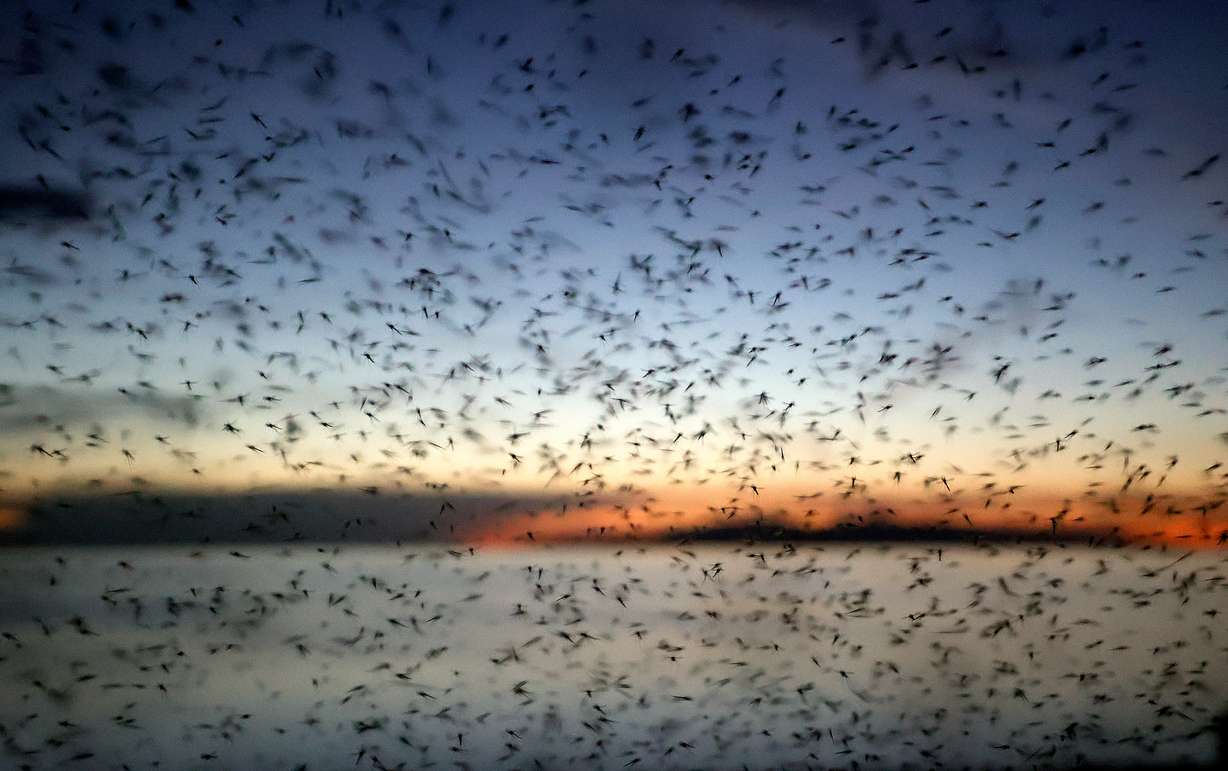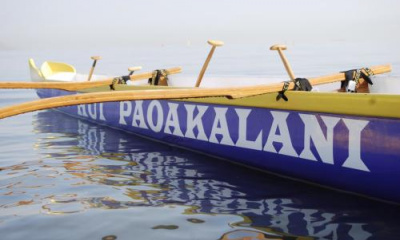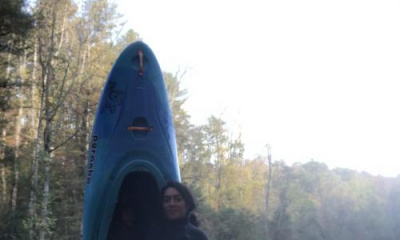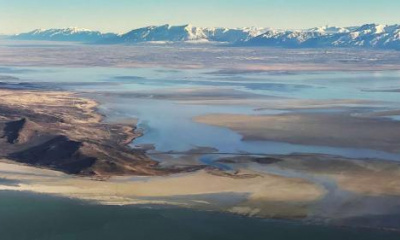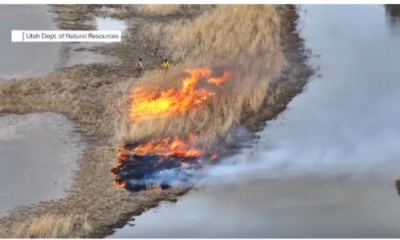SALT LAKE CITY — Janice Gardner vividly remembers what it was like to venture out into the Great Salt Lake's vast wetlands as she and multiple groups of volunteers began counting shorebirds as part of the first extensive shorebird count in the area since 1995.
Most of the volunteers were biologists that morning in August 2022, so they were aware of the lake's struggles; however, interacting with the land firsthand gave everyone a different understanding of how bad the conditions had gotten as the lake plummeted to an all-time low.
"It was remarkable to everyone how dry it was," said Gardner, an ecologist for the conservation nonprofit Sageland Collaborative. "People were walking like a mile and a half to 2 miles just to get to the shoreline. You think about Saltair, (and) the shoreline used to be right there by the frontage road off I-80. And then, you had to walk miles to get to the shoreline to see the birds."
The lake's Great Salt Lake State Park marina location would end up going on to fall to about 4,188.2 feet in November, almost 12 feet below the lake's average water level over the past 175 years.
That's also about when the lake's fortunes began to change.
Utah ended up picking up a record 30-inch snowpack with even higher snow water equivalent figures in the mountains above the Great Salt Lake Basin. The marina location entered this week with an elevation of 4,193.8 feet, gaining more than 5 feet over the last seven months as a result of the ongoing snowmelt.
While the water levels are still about 4 feet below the minimum goal outlined by experts, its gains are also temporarily repairing some of the other issues that experts saw in the fall, including dangerously high salinity levels that had put its ecosystem on the brink of a collapse.
"We're, like, so blessed to have this huge winter with tons of rain," Gardner said. "There's still quite a march to get out to the shoreline, especially in a lot of the (state-managed) wetlands … but the wetlands are just completely full of water, which is so thrilling."
Reversing the lake's alarming salinity levels
Water levels aren't the only issue when it comes to the Great Salt Lake ecosystem and its shorebird habitat.
The lake's salinity levels began to rise as its water levels dropped, which became a serious problem, especially in the lake's arm south of the causeway that cuts through the lake.
Healthy salinity levels, for this side of the lake, are considered to be between 12% to 16%, less salty than the northern arm. But levels had crept to nearly 18% by the time Gardner and others rekindled a comprehensive migratory shorebird survey.
The volunteers almost immediately noticed there weren't many brine flies, a major source of food for the millions of migratory birds that pass through the lake every year.
"So even anecdotally, people were like, 'Gosh, it seems like there's a lot less bugs,'" Gardner said.
The team counted 228,146 shorebirds at several sites across the region, with phalaropes accounting for nearly three-fourths of the birds observed during the time of the count. It's difficult to compare that to recent years, though, because it was the first count of its kind in nearly three decades.
Meanwhile, the rising salinity levels remained a problem in many experts' minds. A team from the Utah Division of Forestry, Fire and State Lands ended up raising a berm at the causeway a month after the bird survey to help slow down the rate of the high-salinity water flowing from the north arm into the southern arm.
It worked, but salinity levels still ended up near 19% by November. On top of that, the low water levels exposed more and more microbialites, which are lake deposits that provide a "vital habitat" for brine flies, as noted by the Utah Division of Wildlife Resources. Both of these factors helped wiped out many of the brine flies in the ecosystem.
However, the wet winter and strong spring snowmelt pushed the salinity level down to about 14% by May 1, according to the latest count made available by the U.S. Geological Survey. It's within the healthy threshold for the lake again.
This is why anyone who has visited the Great Salt Lake area this spring may have noticed brine flies buzzing around in full force once again.
"(It's) within a zone … that the brine shrimp and the brine flies are happy, so to speak," Gardner added. "The food they need can grow, and so they're happy."
What this means for the shorebirds
Ben Abbott, an assistant professor of ecosystem ecology at Brigham Young University, calls the return of bugs an important indicator of the lake's health and the ecosystem. He refers to the lake's current water levels — and salinity levels — as "night and day" compared to last year.
It helps out all sorts of birds — great blue herons, snowy egrets and American avocets — that can be seen throughout places like Farmington Bay, a vital habitat for migratory birds. In fact, state wildlife officials say there are more than 300 bird species that use the ecosystem every year.
"They're on the islands. They're on the shoreline. Some of them are up in the vegetation. Some of them are on floating rafts of organic material," he said. "It's a peek at what the future could hold if we commit to long-term restoration of (the) Great Salt Lake."
Gardner and the team of volunteers also returned to the Great Salt Lake and various other bodies of water in the region between April 24 and April 28 to count the birds again as part of the first spring survey since the 1990s.
The survey team counted a little less than 85,000 total shorebirds, nearly half of which were American avocet, according to the team's preliminary report. They found about 23 different species of migratory shorebirds on the day, including some rare birds like semipalmated pectoral sandpipers and whimbrels.
It may seem like a significant dropoff from the more than 228,000 shorebirds detailed during the August survey; however, Gardner said this is likely because researchers "missed the peak" during the spring migration period. It's possible that many of the birds, especially the ones that spend the winter in South America, waited to migrate north because of the conditions.
"That happens. We pick our peak survey windows based on the past 10 years of when the shorebirds are most likely to come through," she said. "Luckily, we don't think it's because they all died or something, necessarily. It's just because … they have this spidey sense — the birder sense — that they're gonna stick around in Argentina a little bit longer."
John Neill, a Great Salt Lake ecosystem program wildlife biologist for the Utah Division of Wildlife Recourses, adds that the strong spring runoff reduced some of the shorebird habitats because the water mudflats they prefer were flooded. This may have factored into the count, too.
That said, he points out shorebirds are typically good at adjusting — "how they use the lake as their habitats shift through time."
It's worth noting that the April survey is also a baseline number for the spring count. Researchers plan to return to the lake and count shorebirds every August and spring for at least the next three years as they track how shorebirds are reacting to changes within the Great Salt Lake ecosystem.
Meanwhile, Abbott maintains that lake levels are not where they need to be just yet. If lake levels rise another 5 feet, he predicts there would be a much larger increase in wildlife habitat.
Its increases this year are a step in the right direction, though.
"We're able to see the short-term recovery of the ecosystem because of weather variability, and also that the public and our policymakers are staying so focused on conservation," he said. "I think (it is) a really positive sign."

